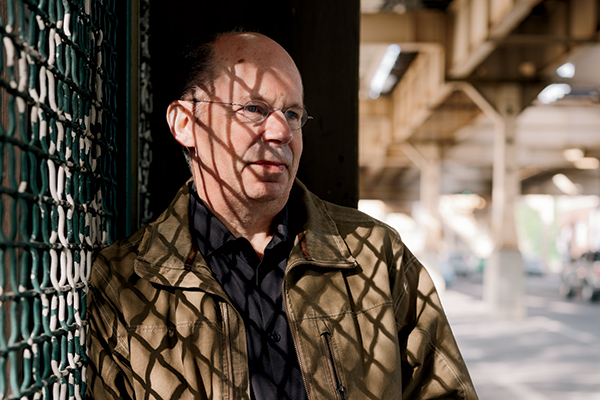One of the things I admire about Chicago,” says Alex Kotlowitz, “is it’s a city of outsiders, where outsiders can come in and really thrive.”
Kotlowitz is one of them. He grew up in Manhattan and worked as a community organizer in Atlanta and as a journalist in Lansing, Michigan, before he arrived here as a reporter for the Wall Street Journal. He intended to stay only two or three years. It’s now been 40. For 26 of those years, he’s lived in Oak Park, four blocks from the city limits; for 20, he’s taught at Northwestern University in Evanston. But for his best-known works — the 1991 book There Are No Children Here, the 2011 documentary The Interrupters, and this year’s acclaimed book, An American Summer — he immersed himself in the city’s poorest neighborhoods, where he would always be an outsider by virtue of race and class.
“My first time in the Henry Horner Homes,” he remembers, “I felt a deep sense of shame. I was working a mile and a half from there. I went to Bulls games at the United Center. It was clear the minute I walked into that place how disturbingly distressed it was. After I began to spend time there, that sense of shame turned to anger.”
Kotlowitz doesn’t deal in the abstraction of public policy. Instead, he tells stories of specific people, not to answer questions, but to ask them. An American Summer asks how people deal with the trauma of gun violence, both as individuals and as a community. “It’s a myth that somehow people just push on and put it behind them,” he says. “We’ve got to deal with the foundational issues that lead to the violence, which is the lack of opportunity in parts of our city and parts of America.”
Previously, Kotlowitz thought there were only two paths available to him as an outsider: remain silent and complicit, or tell other people’s stories. Now he’s found a third: to give people tools to tell their own stories. While he was writing An American Summer, he began working with inmates studying writing at Stateville Correctional Center. Some of his students’ stories were published on the New Yorker’s website and broadcast on WBEZ. He continues his work at Stateville this fall.
Are Chicagoans ready to listen? “It’s still very much a tale of two cities,” Kotlowitz says. “You walk out of your house in Englewood and look at that gleaming skyline downtown, and you know it’s not yours.”
Maybe it takes an outsider to see our city with such stark clarity, both its beauty and its flaws.



